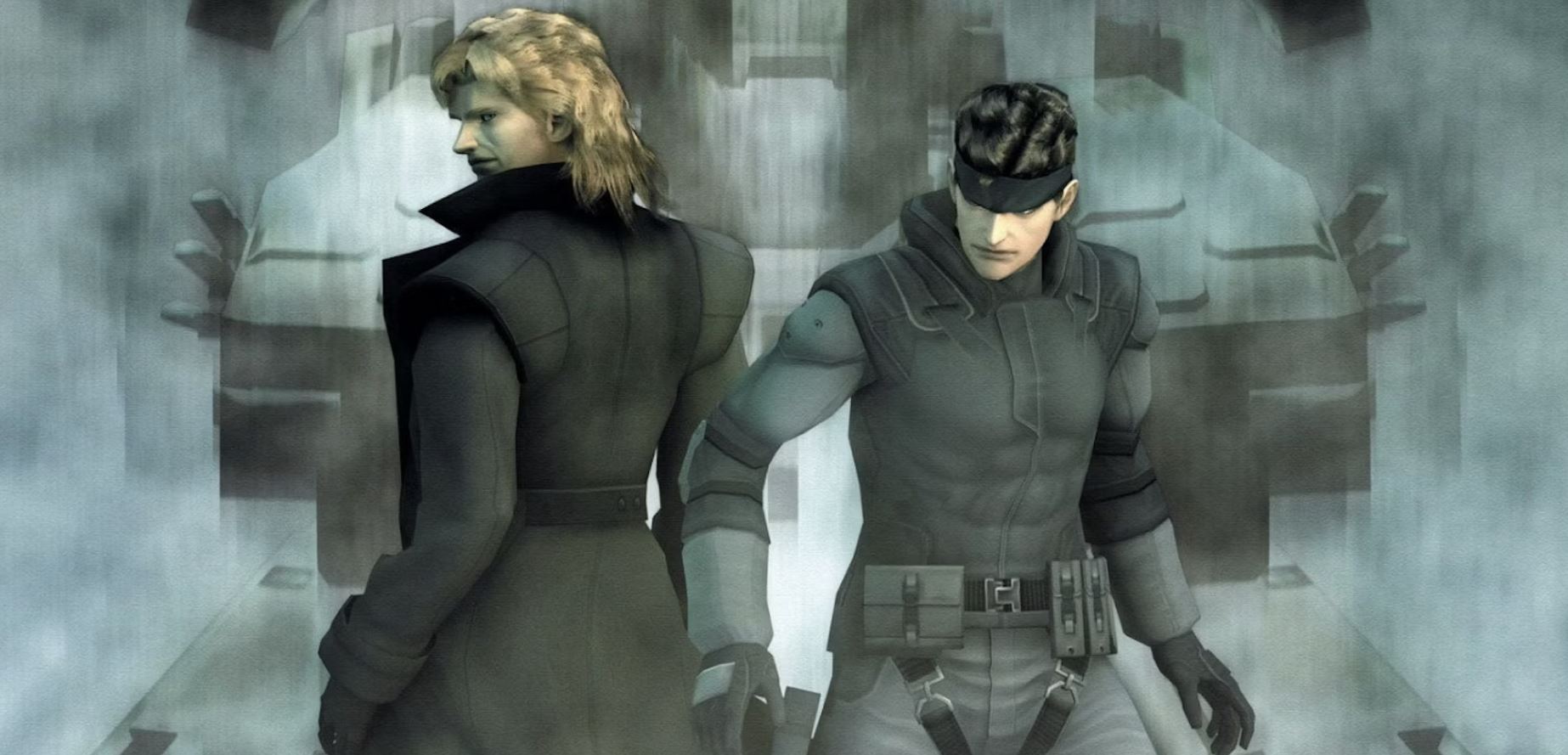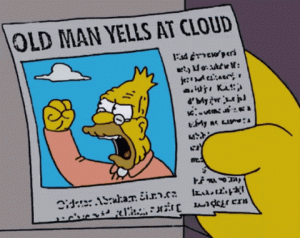
1998’s Metal Gear Solid is one of those rare undisputed classics. Hailed as a revolutionary release in its day, the game’s reputation has arguably only grown since then. If you’re like me, you may even still prefer that game over some of its stellar sequels due to its comparatively subdued style.
Hey, I love Metal Gear creator Hideo Kojima, but after decades of short film-length cutscenes, obtuse dialog, and generally escalating weirdness, I sometimes look back at Metal Gear Solid and long for its comparatively grounded nature.
But what if I told you that there was a significantly weirder official version of Metal Gear Solid? Actually, what if I told you that version of Metal Gear Solid may be the strangest and most bizarre chapter in a historically strange series of games?
Yes, I’m talking about The Twin Snakes: the 2004 Metal Gear Solid remake that was released just over 20 years ago for the Nintendo GameCube. It’s a game that people quickly forgot about at the time and one that has become even more obscure in the years since its release. However, that time has made it clear that the Twin Snakes is too fascinating and strange to remain yet another lost title.
The Dream Game
At the time of its release, Metal Gear Solid: The Twin Snakes was considered to be something of a dream project. The Twin Snakes was co-developed by Silicon Knights: the team behind the Nintendo GameCube’s beloved cult horror classic, Eternal Darkness: Sanity’s Requiem. With that game, Silicon Knights demonstrated both their mastery of the powerful new Nintendo hardware and their ability to think far outside of the box. They seemed to be the perfect outside studio to tackle a Metal Gear Solid title.
In fact, Kojima himself reached out to Nintendo legend Shigeru Miyamoto to see if Silicon Knights would be willing and able to remake one of his most beloved and celebrated games. While Kojima could not devote himself to that remake full-time as he would have seemingly liked to (he was still working on Metal Gear Solid 3: Snake Eater) he did agree to assist Silicon Knights in an advisory capacity and ensure the quality of the project.
While early details about the remake were scarce at that time, it was reported that The Twin Snakes would incorporate many of the much-celebrated gameplay improvements introduced in Metal Gear Solid 2 alongside the advanced modern visuals that only the GameCube could provide.
Remarkably, news about the remake only got better from there. Not only would Kojima be available to help his hand-picked studio develop an ambitious MGS remake, but most of the game’s original voice cast would return to re-record their original lines (and new dialog) in order to optimize the GameCube’s audio output capabilities. On top of that, the game would feature new and remastered music tracks that were split between Silicon Knights’ music team and Metal Gear Solid 2 composer, Norihiko Hibino.
Think about all of that for a second. Hideo Kojima and his hand-picked partners working together on a Metal Gear Solid remake with better graphics, the returning original voice cast, an expanded soundtrack, and the celebrated gameplay of Metal Gear Solid 2. It was, as many would soon discover, too good to be true.
The More Things Change…
Between Kojima’s involvement and the return of so many principal players from the original Metal Gear Solid team, you may think that The Twin Snakes would be a fairly faithful remake of the original game. In some ways, it very much was. In those ways, though, we discover some of the game’s biggest problems.
As noted above, The Twin Snakes features many of the refined gameplay concepts previously seen in MGS 2 (including optional first-person aiming, improved cameras/controls, better enemy A.I., the ability to hang off rails, and an expanded arsenal of weapons). However, much of the original game’s level design remained unchanged beyond the point of absolute necessity (such as adding lockers to hide in). The idea was simple and seemingly glorious. Twin Snakes is the Metal Gear Solid you know and love but with the improved gameplay of Metal Gear Solid 2.
However, it didn’t take long for gamers to spot the fundamental issue with that setup. It turns out that when you offer players all those new gameplay options without altering large chunks of the original experience, you end up with a game that fundamentally breaks that originally intended experience. It’s why Capcom had to modify many parts of the Resident Evil 2 Remake to account for players’ ability to freely aim their weapons (among other things).
Broadly speaking, Twin Snakes is a significantly easier game than the original Metal Gear Solid. Most challenges could now be overcome simply by tranquilizing foes from a safe distance. At best, those expanded abilities minimize the intended tension of many of the game’s best moments. Stealth is now often optional in that revolutionary stealth game. Other parts of the original game were simply ruined by those gameplay additions. Most notably, the original Revolver Ocelot boss battle was trivialized by your newfound ability to stand in one place and accurately shoot him from across the room.
With enough distance from Twin Snake’s release, it’s easier to appreciate that element of the game as a strange lesson in the fragile relationship between gameplay and level/objective design. But it is utterly bizarre to play a game that crams new and faithful concepts together in a way that feels both familiar and alien. It’s almost like the video game equivalent of Gus Van Sant’s shot-for-shot ‘90s Psycho remake.
Why is Twin Snakes’ gameplay like that, though? Surely someone must have realized during development that was going to be an issue. Well, one of the biggest reasons for that mishmash of concepts has to do with the strange position Silicon Knights found themselves in while working on the game.
Silicon Knights’ former Technical Advisor Ted Traver previously stated that many members of the team were not happy to learn they would be working on someone else’s game rather than their own IP. Working with someone else’s property meant having to adhere to whatever guidelines another company set forth. In his words “Konami had made it very clear earlier on that we at Silicon Knights were creating the VCR to play their movie.”
Traver also explains that the development of Twin Snakes was split between two main teams: one working for Konami in Japan and the other the Canada-based Silicon Knights crew. The two teams often spoke (and Kojima offered input all the while), but each regularly needed to make decisions that would greatly impact the others’ work. As if that wasn’t enough, the two teams were initially only given a little over a year to complete this ambitious remake. You can probably start to see how big ideas became big problems.
That inherently tricky relationship was complicated by additional factors. In a 2003 interview with IGN Silicon Knights’ President Denis Dyack addressed the increasingly popular belief that Twin Snakes was just a GameCube port of Metal Gear Solid. It was a fear that spoke to just how new this style of video game remake still was and the challenges of not just making such a game but understanding what was expected from it.
A publisher like Capcom could do everything within its power to ensure that their GameCube Resident Evil remake was not just better than the original game but also allowed the RE team to fulfill that vision they couldn’t quite make work in 1996. With Twin Snakes, the question was not only “Whose vision are we fulfilling on any given day?” but “How do we regularly cross an ocean of communication and logistical challenges to fulfill it?” For that matter, how many people in 2004 looked at Metal Gear Solid and felt that it truly needed a remake?
That’s the strangest thing about Twin Snakes. When you hear that there was a divisive Metal Gear Solid remake, your first instinct is probably to blame the new developers or the greedy publisher. In this case, though, you can’t talk about Twin Snakes‘ problems without talking about Hideo Kojima.
Kojima Unchained
For as strange as Twin Snakes‘ gameplay is, that remake will always be defined (and often criticized) for the…quality of its cutscenes and storytelling changes.
Just as Twin Snakes preserved many level design elements of the original Metal Gear Solid, the remake retains many of the major plot beats from the original title. However, Twin Snakes not only features entirely new story sequences but changes certain legacy story scenes, alters original pieces of dialog, and, naturally, features entirely different line readings.
What kind of scene changes are we talking about? Well, just take a look at this scene in which Solid Snake deftly avoids a sniper bullet by leaping into the air Matrix-style:
Now, you may think I’m cherry-picking an especially strange scene to make a point, but I assure you that I am not. Twin Snakes is famously filled with sequences that see Solid Snake exhibit what could only be described as superhuman abilities. Granted, such Matrix-like sequences were popular at the time, but Twin Snakes pushes the limits of (and arguably abuses) that cultural privilege.
It’s not just the bullet time sequences, though. Twin Snakes features multiple scenes that defy all logic (such as Revolver Ocelot directly addressing the player) as well as numerous changes to crucial pieces of dialog. Some of those changes are the roundabout result of the voice actors reading them slightly differently this time around, but others were completely rewritten.
The reception to those rewritten lines isn’t universally negative, but there are multiple scenes in Twin Snakes (most notably, the death of Sniper Wolf) that are deliberately stranger and often sillier than they were in the original game. It’s almost like the whole game is a weird hidden track Easter egg for fans who know the original game front-to-back.
However, you have to remember that for some Nintendo fans, Twin Snakes was the first version of Metal Gear Solid they ever got to play. So, while those who knew the original game may have been in on Twin Snakes‘ fan service jokes and hardcore callbacks, many others were left asking “What the hell is happening?”
The answer to that question brings us back to Hideo Kojima. Originally, Silicon Knights intended to make Twin Snakes as similar to the original Metal Gear Solid as reasonably possible. However, it was Kojima who encouraged Twin Snakes‘ cinematic director Ryuhei Kitamura to go nuts with the project and incorporate his brand of stylistic action into more of the game’s cutscenes.
And those are the real Twin Snakes at the heart of what makes this game so strange: Kojima and Kitamura. For Kitamura, Twin Snakes was a chance to use the Metal Gear Solid property and Twin Snakes’ budget/technology to explore his craziest creative visions. For Kojima, Twin Snakes was a chance to oversee a more surreal version of Metal Gear Solid that feels stylistically closer to future sequels (at least in some respects).
Who, exactly, is responsible for what in the final project has always been slightly tougher to figure out. What we do know is that Twin Snakes’ Japanese team was involved with nearly every aspect of the title and that Kojima was surprisingly involved with that team’s output despite his other commitments. We also know that Kojima was never entirely happy with the original MGS’ English script as he felt the game’s translator had made too many changes to his original dialog/vision.
What you’re left with is the remarkable possibility that Twin Snakes isn’t so strange because its outside developers went rogue but rather because Kojima wanted things that way. Yes, you can see obvious examples of Silicon Knights’ and Kitamura’s influence, but those smaller dialog changes and overarching alterations almost certainly came from Kojima. The question is, “Was Kojima trolling the world by having a little fun with Twin Snakes or is Twin Snakes closer to his original vision for Metal Gear Solid than people think?”
In fact, in an interview with CVG, Kojima was asked about the possibility of collaborating with more studios. He didn’t rule it out, but he did cite Twin Snakes as an example of how difficult that process can be.
“You have to match the studio to the project,” Kojima explained. “In the past, we did Twin Snakes with Silicon Knights and it didn’t do that well. I think part of the reason was that we were trying to control it too much. Really I think if you’re going to use an outside studio it has to be in order to take advantage of their abilities. If they have a specialty and you’re working on a project that has features that they’re best at, then that’s fine. But I don’t want to have to force myself to put something to an outside studio just because I want to offload something.”
Though I’ve never gotten the impression that Kojima hates The Twin Snakes (as some argue he does), that statement does indicate a measure of regret. The implication is that if Kojima could do it all over again, he would probably either handle the remake himself and claim all responsibility for it or let Silicon Knights deliver their version of that experience. What we ended up with instead is the kind of video game remake we don’t see often: one that struggles under the watchful eye of the original material’s acclaimed creator.
Unfortunately, Twin Snakes‘ status as a rare kind of remake isn’t enough to ensure the game gets to live on in the modern age.
Snake….Snake?!?!?
Metal Gear Solid: The Twin Snakes was released in North America on March 9, 2004, and was met with a generally positive reception at that time. The criticisms over its changes (and, in other areas, lack of changes) were always there, but at the very least, it was seen as a fascinating novelty from one of the industry’s hottest studios.
However, The Twin Snakes reportedly failed to sell as well as some of the GameCube’s other notable exclusives at that time. By the time the legendary Metal Gear Solid 3: Snake Eater was released later that year, Twin Snakes was already becoming a distant memory. It’s a memory that was further tarnished by the 2008 release of Too Human: Silicon Knight’s infamous passion project that forever tarnished the studio’s reputation and contributed to the popular narrative that they were in over their heads during the development of Twin Snakes.
Perhaps they were. However, everything we know about that game now suggests that at least some of its most controversial elements and problems weren’t entirely their fault. If you are one of those who remain disappointed with The Twin Snakes, then you must at least acknowledge that some of the game’s issues and oddities were the result of the game’s bizarre development process. It’s difficult to imagine a studio that could have successfully navigated those challenges.
Yet, I love The Twin Snakes. Not as an objectively great game, mind you (even if it’s better than some suggest) but as a fascinating piece of one of gaming’s greatest franchises that is often enjoyable because of itself rather than despite itself. Removed from all expectations that existed in 2004, it’s easy to see Twin Snakes as a truly bold remake produced at a time when there was no standard (golden or otherwise) for such ambitious projects. It’s often enjoyable and always wonderfully weird. There’s also the possibility that it’s much closer to a Hideo Kojima vision than many at that time saw it as.
Unfortunately, you can’t officially play The Twin Snakes today and you will likely never be able to play the game via official modern means. Between the Kojima/Konami fallout, the game’s low sales, Nintendo’s involvement, and Silicon Knights being shuttered back in 2014, Twin Snakes would need to overcome a seemingly impossible series of logistical hurdles to ever get even a bare-bones re-release.
Some will argue The Twin Snakes is better off as a humorous “Did You Know?” game best experienced via YouTube and these kinds of retrospectives. Maybe they are right. However, there is something hollow about only being able to watch or read about something you really have to play in order to appreciate and believe.
The post The Weirdest Metal Gear Solid Game Has Sadly Been Lost to Time appeared first on Den of Geek.









